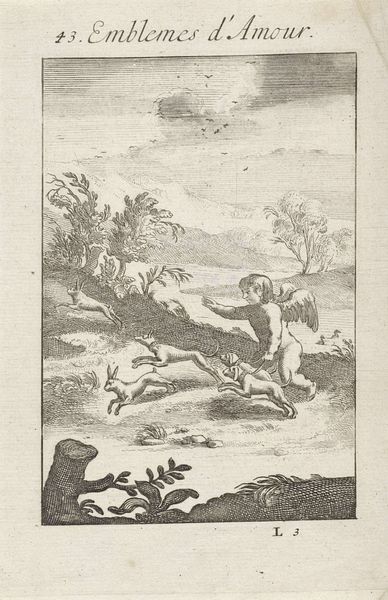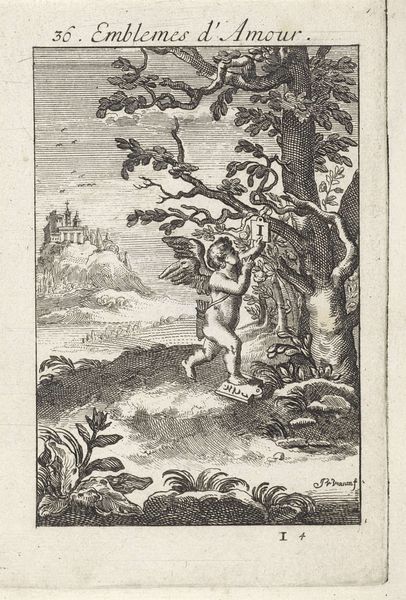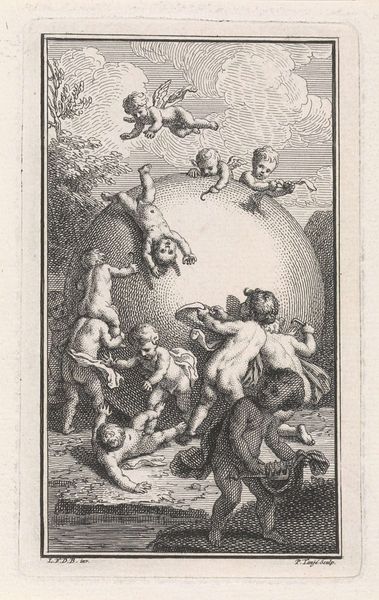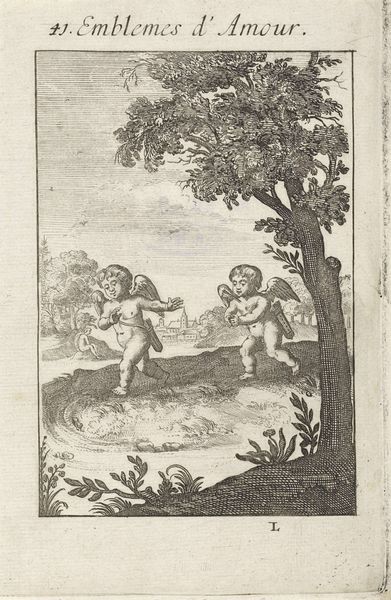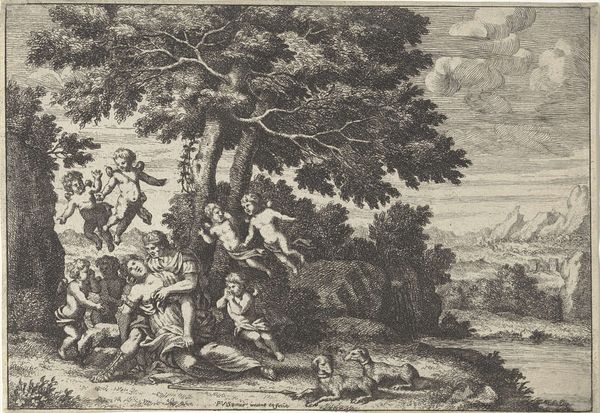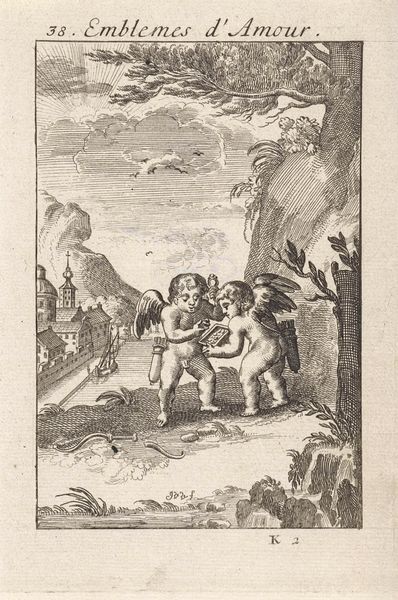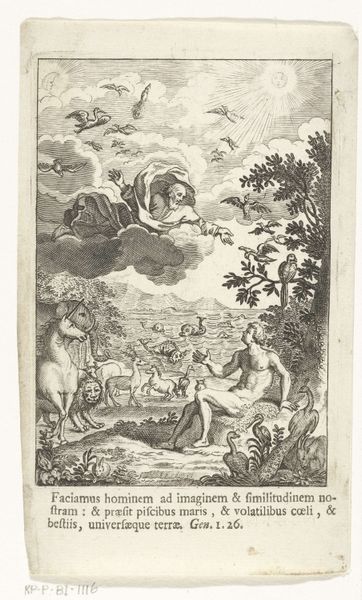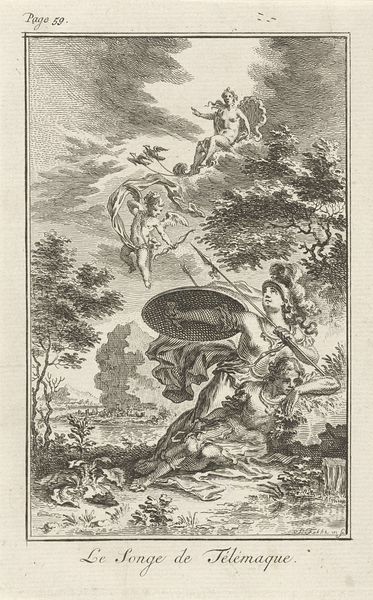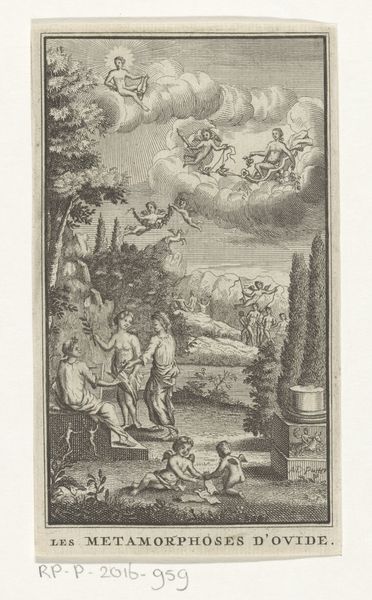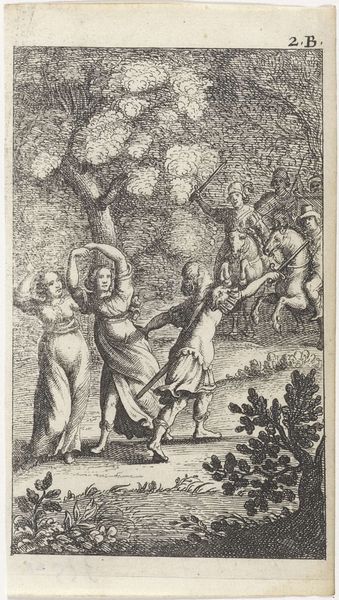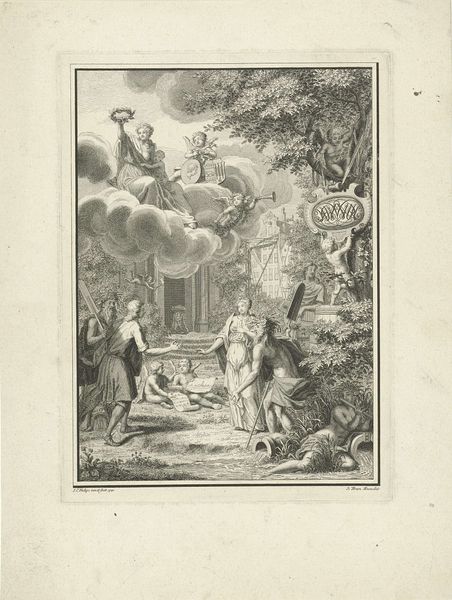
engraving
#
allegory
#
baroque
#
old engraving style
#
landscape
#
figuration
#
history-painting
#
engraving
Dimensions: height 145 mm, width 95 mm
Copyright: Rijks Museum: Open Domain
Curator: Immediately, I'm struck by the vibrancy captured in this engraving. It feels almost joyful, even in monochrome. Editor: Indeed. Here at the Rijksmuseum, we have an engraving from 1686 by Jan van Vianen entitled "Putti jagen op een haas", or "Putti chasing a hare." It's a beautiful example of allegorical Baroque art. Curator: "Emblems d'Amour" is the title above the image itself, so these cherubs are up to no good in the game of love, certainly! Editor: Precisely. The putti, these cherubic figures, are often used as symbols of love, desire, and innocence, rooted in classical antiquity. But here, we see them engaged in the hunt. The hare itself, often a symbol of fertility, becomes the object of playful pursuit. It may refer to popular games, showing how courtship plays out. Curator: I notice how Van Vianen utilizes the landscape; the solid tree and undulating terrain provide both an arena for their game and a contemplative depth behind the youthful exuberance. There's a classical influence here. Editor: Yes, the controlled strokes in the engraving contribute to a visual order reflecting 17th-century tastes, very popular in artistic institutions of the period. Engravings democratized images. One could have affordable copies of art that aligned them with prevailing tastes. Curator: It is as much about the cultural implications as the visual storytelling. Looking at the imagery, the rabbit could also suggest the fleeting nature of love itself, forever pursued but never fully grasped. That seems almost an apt symbol for love’s illusions and difficulties in relationships at the time. Editor: Well observed. This piece functions on multiple layers – simple amusement, societal values, and even philosophical reflection. It’s quite clever how van Vianen intertwined the cultural narrative with a seemingly simple, almost cartoonish scene. Curator: It reminds us how seemingly lighthearted imagery can hold deeper resonances, reflecting both artistic intention and contemporary norms. It seems as a reminder to explore the cultural landscape of an era, if one is to fully understand its symbols. Editor: Precisely. An artwork's significance isn't fixed. It's something that changes as cultures shift and interpret the works accordingly. It is our job as historians and iconographers to keep having the conversation with the work itself, to allow visitors a door to its timeless wisdom.
Comments
No comments
Be the first to comment and join the conversation on the ultimate creative platform.
